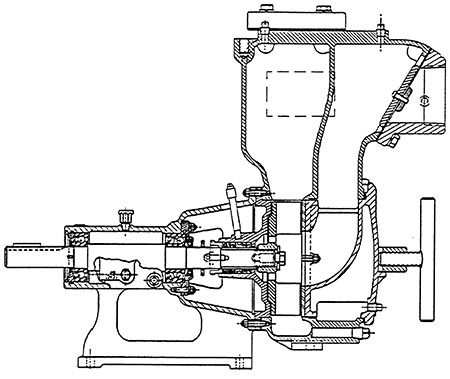
What are the application considerations when selecting a pump for dewatering?
Dewatering is the removal process of water from a location and is typically done by pumping out the water. This normally happens at construction sites, as you need to remove all the water from the site to create a safer environment to work in and build on. For construction sites, portable dewatering pumps driven by engines are typically well-suited.

Dewatering applications often require a suction lift; therefore, self-priming rotodynamic pumps are frequently used for applications. Self-priming centrifugal pumps (Image 2) are commonly placed up to 8 meters (25 feet) above the liquid level of the source. The driver is mounted on a baseplate and flexibly coupled to the pump through a bearing frame, which may also be connected to the baseplate. The casing is designed with self-priming capabilities.
During initial startup, the impeller rotation causes the liquid in the impeller and inlet side of the pump reservoir to be forced to the discharge cavity. Differential pressures cause the priming recirculation to start. The priming action reduces pressure in the impeller eye and allows atmospheric pressure on the liquid source to fill the suction line.
For more information on self-priming pumps used in dewatering applications, refer to “ANSI/HI 14.3 Rotodynamic Pumps for Design and Application” at pumps.org.

